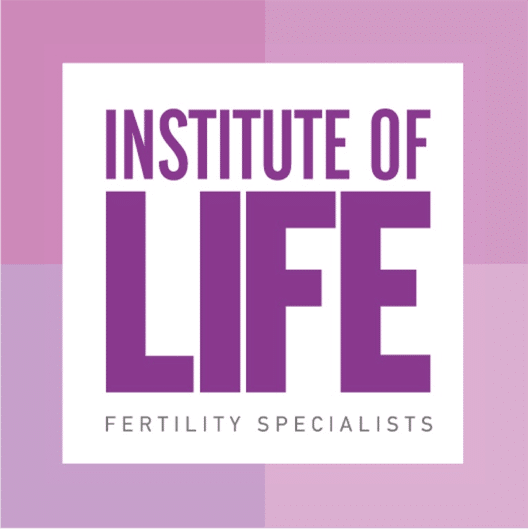Dominique de Ziegler, MD

Διεθνής Επιστημονικός Σύμβουλος του Institute of Life
Βιογραφικό
1.Current position (from 2007)
Professor and Head
Division Reproductive Endocrinology and Infertility
Dept of Obstetrics and Gynecology
Univ Paris Descartes – Hôpital Cochin,
Paris, France
A Clinical Professor
Division of Reproductive Endocrinology and Infertility Dept of Ob Gyn
New York University (NYU), New York, USA E-mail: [email protected]
2. Training
- Specialty in Obstetrics and Gynecology
Residency in Obstetrics and Gynecology: UCLA
Diplomate of The Am Board of Obstetrics and Gynecology - Sub-specialty in Reproductive Endocrinology and Infertility (REI)
Fellowship in Reproductive Endocrinology and Infertility: UCLA
Diplomate of the Am Board of Ob-Gyn, Reprod Endocr. and Infertility (REI). - By endorsement of US diplomas:
Specialty in OB-GYN and subspecialty in REI
in France and Switzerland
3. Editorship
Editorial Board of Fertility and Sterility
Former Associate Editor Human Reproduction
Ad hoc Reviewer: Journal Clin Endocr and Metab, Lancet
4. Past positions
4.1 Assistant Professor
1986-1988: Reproductive Endocrinology and Infertility
University of New Jersey, Newark NJ
4.2 Associate professor
1988-1992: Reproductive Medicine
Hôpital Antoine Béclère, Paris France
4.3 Director, Head of Research and Development
1992-2003 Columbia Laboratories
New York, NY
4.4 2004-2008: Professor and Head Division Reprod Endocr and Infert.
Joint ART program University Hospitals of Geneva and Lausanne Geneva and Lausanne, Switzerland
5 Special interests in REI-ART
The following two fields received our primary interest:
5.1 Donor-egg ART, a model for understanding receptivity
Conceived for women with failing ovaries trying to become pregnant donated oocytes, donor-egg ART (DE-ART) implies priming endometrial receptivity with the sole use of exogenous hormones. Against the odds, embryo implantation rates obtained in the E2 and progesterone cycles designed for DE-ART turned out to be excellent actually, as good as it comes. This therefore made DE-ART an ideal model for studying the respective roles of E2 and progesterone in priming endometrial receptivity. In this process, we studied the direct vagina-to-uterus transport of progesterone delivered vaginally. Today, we focus our interest on some possible non-pelvic effects of progesterone, including on the immune system and possibly, the neuro-hypophysis (VP; OT). These non-pelvic effects are likely blood-level, not uterine tissue concentration dependent.
5.2 Endometriosis, a model for understanding oocyte quality and quantity issues
Endometriosis is a disease of unknown origin, which generally alters fertility. Variants of the disease having ovarian extensions – endometriomas and past surgery for endometriomas – are associated with reduced responses to controlled ovarian stimulation (COS), an expression of diminished ovarian reserve. Ovarian endometriosis therefore is a cause of reduced oocyte quantity independent of any aging process. Aware of this, we used ovarian endometriosis as a model for studying the consequences on ART outcome of an isolated reduction in oocyte quantity. This is compared to the common findings made in older women, when reduced oocyte quantity due to aging is accompanied by reduced oocyte quality. We are currently exploring the ART outcome in case of ovarian endometriosis – an isolated reduction of oocyte quantity – when all the embryos are frozen and transfer is differed.
6. Dedicated interest #1:
Aviation-inspired Risk and Safety Management in REI-ART
6.1 Aviation background and licenses
Past aviation experience
Trained as Commercial Pilot (USA)
Licensed by FAA
Certificate # 2315739
Flying time: approximately 1,600 flying hours
Also holding Pilot Licenses from France and Canada
6.2 Personal training in risk and safety management (in aviation)
Formal SMS training in aviation:
Attended a 2-week course in SMS (Safety Management System) in aviation at the University of Southern California (USC, Dept of aviation) in January 2013. This allowed acquiring an inside and in-depth understanding of SMS operation, as are currently implemented in everyday aviation operations according FAA’s requirements.
An in-depth understanding of how SMS dovetails with practical everyday flight operations is necessary for conceiving and modeling the necessary changes that need to be implemented for exporting certain safety fundamentals of aviation (SMS) to medicine and particularly, ART.
6.3 From aviation to medicine
Aviation has a long track record of remarkable safety accomplishments to the point of becoming the safest mode of transportation worldwide, an improbable outcome considering the risks existing. These remarkable results were not fortuitous however, but rather resulted from long and non-abiding efforts and necessitated a true dedication for promoting safety in flying. Several safety measures implemented in aviation stand as being usable in medicine after having been properly adapted. Safety in aviation therefore should inspire our efforts to promote a safer medicine.
Certain aviation-derived safety measures have been directly integrated in medicine in the recent years. These include notably, the adoption of checklists in ORs, which must be run prior to performing surgery. These measures have yielded some remarkable attainments notably, for avoiding the unacceptable mega mistakes that are performing surgery on the wrong patient, wrong organ and/or wrong side.
The aviation-derived measures implemented so far – however helpful for avoiding the mega mistakes – have however little dented the bulk of medical errors. These originate not in the OR, but in the very core of the medical process, in the doctor’s office. The common medical errors committed in the doctor’s office include conducting the wrong workup, following an inappropriate timeline for undertaking the indicated measures, prescribing the wrong treatment and performing the wrong operation for an inappropriate indication.
The difficulties encountered for integrating the aviation-derived safety measures in medicine and the limits encountered in their efficacy stem from the fact that civil aviation and medicine are two very different businesses. Because of these differences, an inner understanding of both industries is necessary for astutely adjusting the aviation-derived safety measures so that they can penetrate deep into medicine and become truly effective. Some of the necessary adjustments needed before the aviation-derived measures can be applied in medicine were recently described (de Ziegler et al. 2013).
6.4 Safety milestones in aviation
We identify two primary milestones in the development of safety in aviation that are most pertinent for improving safety in medicine today
- Dedicated Risk and Safety Management programs
A formal in-house mode of managing risk and safety issues – technically, known as safety management system (SMS) – has become mandatory for all air operations worldwide (including in the US). This has led to the development of dedicated SMS courses for the pilots (and controllers) who desire to become competent and capable of fulfilling the mandatory obligation of running a SMS program within their own air operation.
- Effective return-on-experience process
Enacting an effective return-on-experience system has played a crucial role for enhancing safety in aviation. This allows airlines management and the regulatory agency – in the US, the FAA – to be aware of possible dysfunctions, deviations and near-misses. In turn the regulators can deploy the appropriate – at times, immediate – corrective measures.
A key step for establishing an effective non-punitive return-on-experience system has been the move by FAA to grant immunity for errors that are voluntarily reported to the agency. This mode of action should inspire the enactment of comparable measures in medicine.
We are pursing efforts for adapting these two key points of aviation safety to medicine and REI-ART in particular.
7. Dedicated interest #2
New twists in REI training
7.1 Training in REI-ART conceived ‘Safety Inside’
Our views on risk and safety management issues in REI-ART and possible clinical implementation were addressed in a series of articles (n=5) published in Fertility and Sterility (Dec 2013). These articles will be followed by a new series of 5 articles on training in REI-ART to be published in Fetil Steril in July 2015. In the article that will express our own views, we will outline a training in REI-ART project – initial and recurrent – as we see it, defined by the needs that emanate from the actual practice of REI-ART. This project will try fusing the cultural backgrounds of medicine and aviation in order to design a novel bottom-up education program conceived with a safety inside spirit. These views will be presented with other articles reflecting those of the major professional societies of US and Europe in order to offer a comprehensive and broad update on the issues in training in REI-ART, seen as it is and how it might/should evolve.
7.2 Targeting ‘by-network’ training programs
Ultimately, our education project aims at developing series of ‘by-network’ training programs in REI-ART targeted at fulfilling the needs of developing and emerging countries for certified-competent REI-ART subspecialists. The ‘by-network’ training program in RE-ART will consist in a two-tier system encompassing: (i) Series of initial and advanced courses conceived ‘safety inside’ (described above) and; (ii) certified training facilities offering traceable, formatted and supervised hands-on practical training (not necessarily at the same institutions). An endorsement of the ‘by-network’ training program is part of ongoing discussions with certain major professional societies.
7.3 An education tool, the Doctor’s Operating Manual
Finally, we are currently developing an education tool conceived as an electronic version of the classical ‘Essentials’ training books that are classically found in the doctors’ pockets. The Doctor’s Operating Manual is designed for working on-line and off-line in a way that is inspired by the Flight Crew Operating Manual (FCOM) used in aviation. The latter is an electronic tool created for replacing the voluminous series of binders, carried on board in the classical crew cases, which contained all the data and information pertinent for the flight. As in the FCOM, we are adopting a functional start-to-finish format. Specifically, the takeoff-to-landing design used by FCOM for outlining data and information will be replaced by one that spawns from workup-to-outcome. As in the FCOM, data and information will be stored in a 3D format, featuring successive layers for data of increasing complexity, spawning from the (i) ‘must know’, to (ii) ‘nice to know’ and (iii) ‘expert’ levels.
The Doctor’s Operating Manual will not only carry the data and information typically found in the ‘Essentials’ books, but also serve for storing personal notes and references and the teaching materials provided with courses and seminars. All data and information will be stored in the ad hoc sections and layers for any given topic, allowing easy and instant retrieval.
The development of the Doctor’s Operating Manual will seek collaborations and partnerships. This will be for the IT development, as well as for mustering and periodically updating the academic content. The latter will be conducted in parallel with the development of the collaborative ‘by-network’ training in REI-ART project (see sections 7.1 & 7.2).
8. Publications
8.1 Selection of 5 most preeminent publications:
- de Ziegler D, Gambone JC, Meldrum DR, Chapron C. Risk and safety management in infertility and assisted reproductive technology (ART): from the doctor’s office to the ART procedure. Fertil Steril. 2013;100:1509-17.
- de Ziegler D1, Borghese B, Chapron C. Endometriosis and infertility: pathophysiology and management. 2010;376:730-8.
- de Ziegler D, Brioschi PA, Benchaa C, et al. Programming ovulation in the menstrual cycle by a simple innovative approach: back to the future of assisted reproduction. Fertil Steril. 1999;72:77-82
- de Ziegler Hormonal control of endometrial receptivity. Hum Reprod. 1995;10:4-7.
- de Ziegler D, Bergeron C, Cornel C, et al. Effects of luteal estradiol on the secretory transformation of human endometrium and plasma gonadotropins. J Clin Endocrinol Metab. 1992;74:322-31.
8.2 Several chapters in textbooks
Most important book chapters:
- Pelvic Imaging in Reproductive Endocrinology, Chap 33, The Yen and Jaffe ‘Reproductive Endocrinology’, Strauss and Barbieri Editors, Elsevier Pub, in 2009 and 2013 editions.
- Principles of Oocyte and Embryo Donation. The Dynamic of Artificial Cycles
Sauer, Editor, 2013.








